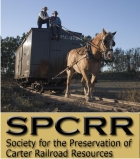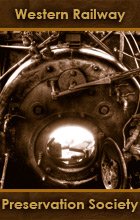

Reference Data.
Corporate Ownership.Sonoma Valley Prismoidal Railway. 1876 - 1877
Sonoma Valley Railroad.
1878 - 1894
San Francisco & North Pacific Railroad.
1894 - 1898
California Northwestern Railroad.
1898 - 1907
Northwestern Pacific Railroad.
1908 - 1993
California Northern Railroad.
1993 - 1996
North Coast Rail Authority.
1996 - Present

San Francisco Call on September 8, 1886.
Sonoma Valley Railroad.
By Andrew BrandonW ith the failure of the Sonoma Valley Prismoidal, the citizens of Sonoma faced losing their hopes of a railroad connection. Joseph Kohn, who had overseen the Prismoidal project, organized the Sonoma Valley Railroad. This company had sole purpose of taking over the failed Prismoidal line and rebuilding the monorail trackage with 3' gauge track of a more conventional design. Locomotive #1 "Sonoma" arrived from Baldwin that same year. Soon, Kohn ran out of capital and was forced to sell his stock. Peter Donahue of the San Francisco & North Pacific began to take interest in the line and used this opportunity to gain control of the line. Donahue pushed the construction from Schellville north to Sonoma with fresh capital.
At the opposite end of the line, in Sonoma Plaza, the railroad had constructed its depot, car sheds, round house and associated structures. This arrangement would prove undesirable to many locals. some old timers fought the coming of the railroad, which they felt, ruined the historic appearance of Spain St. and its historic mission. With the citizens in an uproar and threatening management and employees, the railroad organized their work crews to work all night, bringing the rails into Sonoma much to the surprise of the citizenry. Trackage was then extended from Norfolk, south to "Sonoma Landing" on the northern shores of San Pablo Bay. At Sonoma Landing they constructed pier nearly a quarter mile long into the bay, this allowed for connection with the larger steamers of the bay's fleets.
During 1881 the railroad chartered a second corporation known as the "Sonoma & Santa Rosa Railroad Company" to extend the line another 6.5 files to the north-west. In mid-1882 the railroad reached Glen Ellen and starting in August, the first through service between Glen Ellen and Sonoma Landing began. The first train was greeted by the entire company, Peter Donahue, along with General Vallejo and family, whose daughter Luisa, sang for the crowd gathered around the locomotive. With the ease of travel to and from San Francisco the camping and picnic crowds began to take advantage of the railroad's convenience to the Sonoma Valley. Beyond tourist and passenger traffic the railroad primarily hauled basalt blocks from S. Shocken's quarry in Sonoma. These blocks were shipped to San Francisco, commonly used as cobblestones.
Despite all this, the railroad suffered a major setback in 1883 when Henry Weyl of Sonoma won a suit against the railroad. During the construction of the railroad, permission had been received from the city to build the depot, but not the owner of the land adjacent, Henry Weyl. The railroad appealed to the California Supreme Court and in 1886 the court ruled that the railroad must move its tracks from the front of Weyl's property. Between 1887 and 1888 the railroad built a connection from Sears Point to Ignacio, bypassing the Sonoma Landing line which was kept for freight use. With this new connection to the rest of his SF&NP, Peter Donahue purchased the rest of the company's stock in March 1889 for merger into the SF&NP.
The Sonoma Valley Railroad's demise came in November, when conversion to standard gauge began in Igancio. Conversion was completed in April 1890. The line to Sonoma Landing was abandoned, and the rest of the line continued on as part of the SF&NP until it became the Sonoma Valley branch of the Northwestern Pacific Railroad in 1907. From 1934 to 1975 segments of the line were abandoned, leaving the 16 miles from Ignacio to Schellville. Today, what remains has been long out of service as part of the North Coast Railroad Authority (NCRA).



